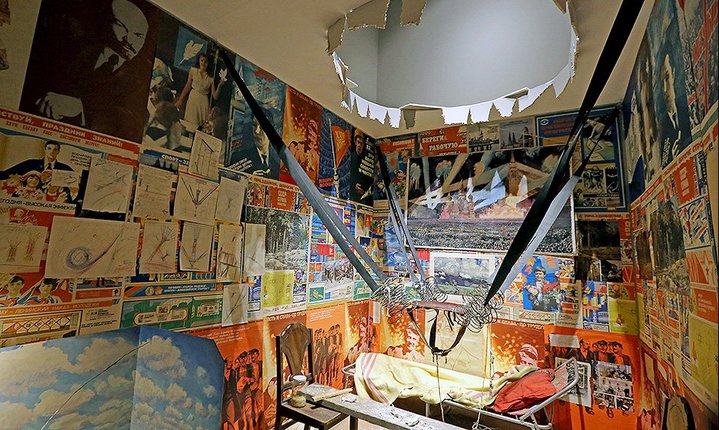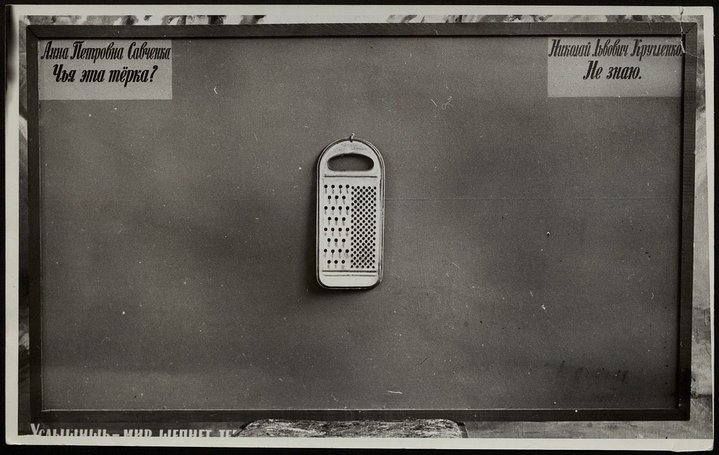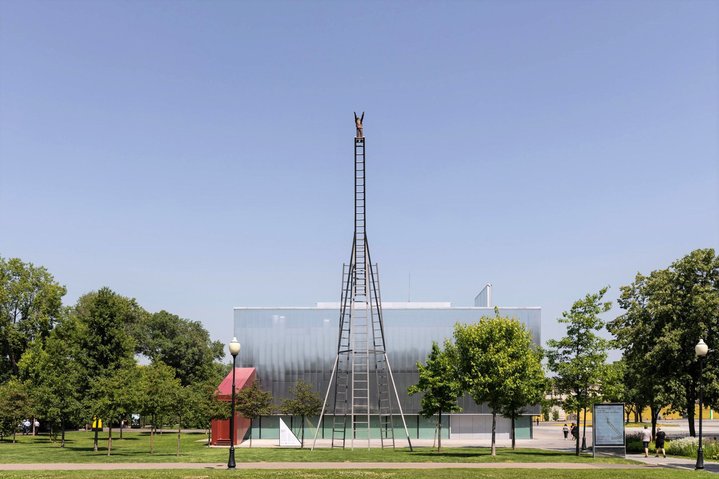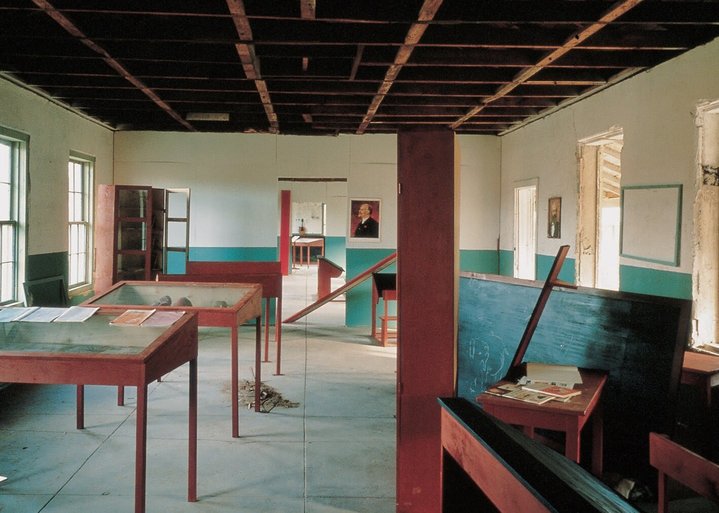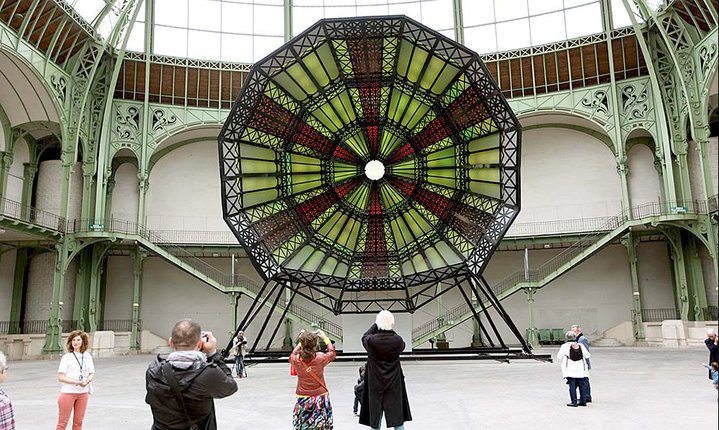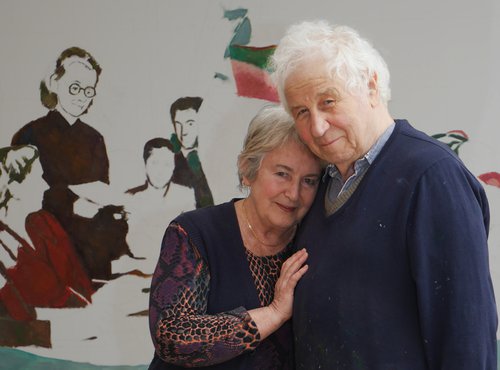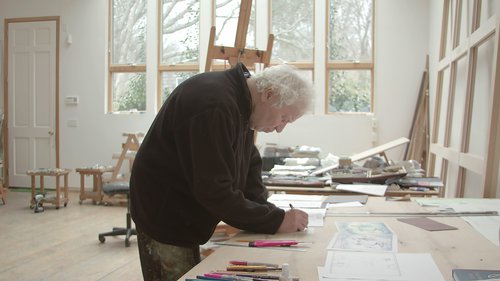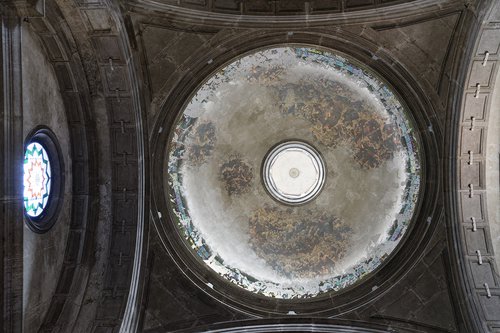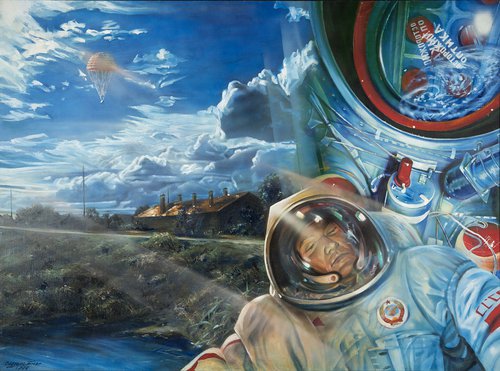A Genius from the USSR: Ilya Kabakov has died
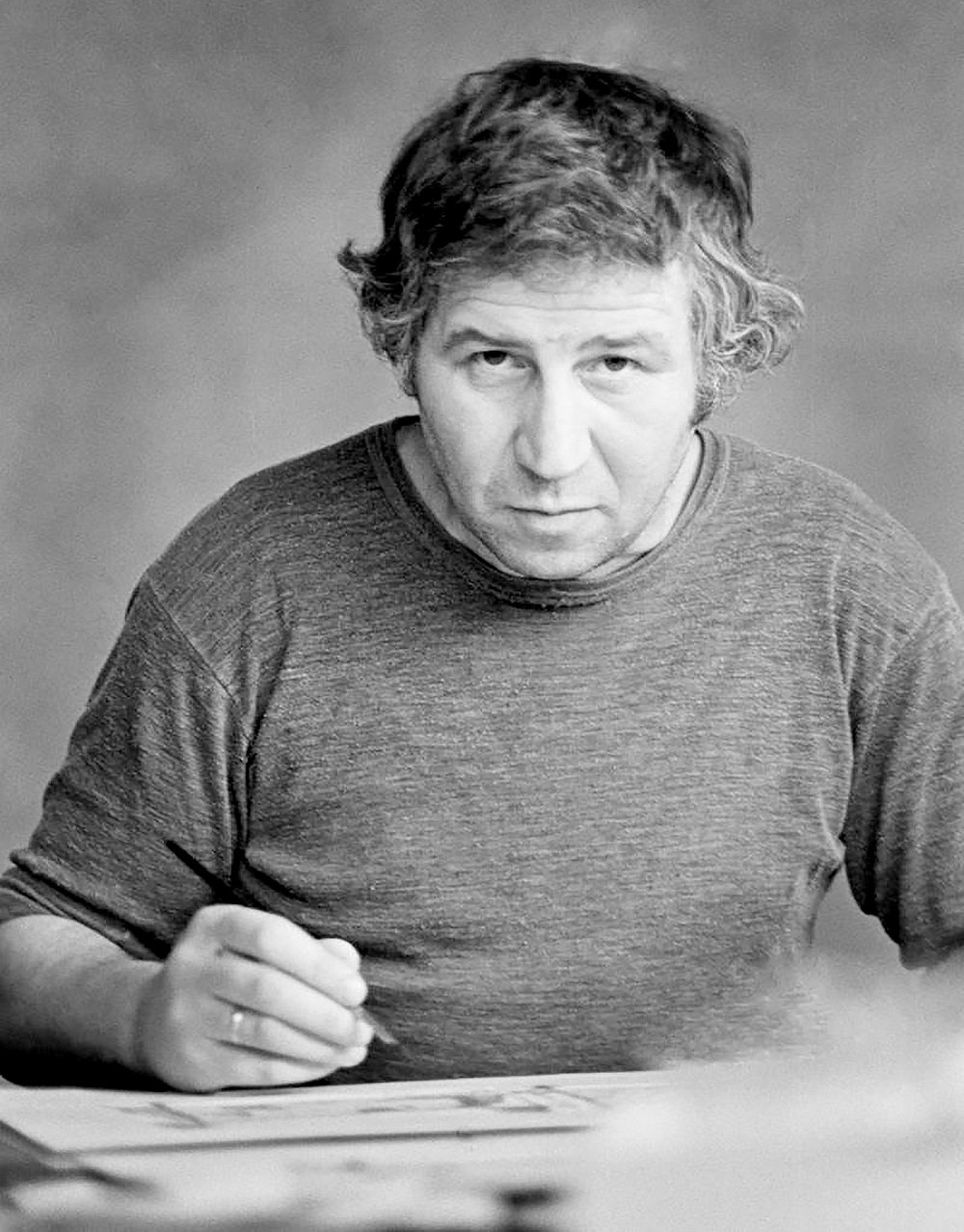
In the United States, within four months of his 90th birthday, Ilya Kabakov, leader of Moscow Conceptualism, famous for his total installations and who has long towered over Russian contemporary art, has passed away. Art critic Ludmila Lunina reflects here on his artistic journey in an article originally published in our sister publication, The Art Newspaper Russia.
"He museified our (ed. Soviet) past for the future, just as Greek masters preserved traces of their great bygone civilization," art collector and entrepreneur Igor Tsukanov wrote in a social media post. "An eternal toiler, he never stopped creating new things and in his ninetieth year he continued to work in his studio, and on huge canvases," said philosopher and cultural historian Michael Epstein. "He left me with the impression of a nervous, vulnerable, introspective person, closed off. A genius – that sounds too bombastic, but as a genius of an era and a genius of a place - yes, undoubtedly, he was," is how Milena Orlova, editor-in-chief of The Art Newspaper Russia summed up her impressions of meetings with him. "He reflected on everything, including the unreflectible. Never in an abstract way but with a brutal vivacity" said Alexander Borovsky, art historian and head of the Contemporary Art Department at the State Russian Museum. "He escaped from Soviet power at the first opportunity, but it never let him go, and he created his own world of nightmarish happiness where he was the main character," artist Sergei Mironenko reflected. The news of Ilya Kabakov's (1933-2023) death on 27th of May made many people think of his iconic 1985 installation,´The Man Who Flew Out of His Room into Space´ where the protagonist has disappeared, having launched himself with a catapult through the ceiling.
Ilya Kabakov was born in 1933 in Dnepropetrovsk (now Dnipro, Ukraine), his father was a mechanic and his mother an accountant. While he was evacuated to Samarkand in 1943, he enrolled at the Leningrad Art School, transferred to the Moscow Art School in 1945, and then graduated from the Surikov Institute. From the 1960s to the 1980s, he was a successful illustrator of children's books (he designed 150 books), a member of the official Moscow Union of Artists, built a studio in the attic of the historical building on Sretensky Boulevard in the centre of Moscow and drove a Volga. At the same time, Kabakov was the leader of unofficial art. All progressive artists would gather around him and form a field of new meanings, or, in the words of writer Vladimir Sorokin, "a bubble of cultural air".
The philosopher Boris Groys united this creative community in a trend in his famous article "Moscow Romantic Conceptualism" (published in the uncensored magazine A-Ya in 1978, ed.), which synchronized the Moscow scene with the global artistic process. One of the major achievements of Ilya Kabakov and the artists close to him such as Viktor Pivovarov (b. 1933), Andrei Monastyrski (b. 1949), Igor Makarevich (b. 1943) and Elena Elagina (1949–2022) was the principle of ´defamiliarisation´, expressed in the idea of a ´character author´ – works created on behalf of invented heroes.
These heroes are human types who live, like the inhabitants of a communal apartment, in Ilya Kabakov's most famous album, Ten Characters (1972–1975). Their names are in themselves telling: ´Sitting-in-the-wardrobe Primakov´, ´Flying Komarov´, ´Painful Malygin´. The artist later dedicated separate installations to these characters, such as ´The Man Who Didn't Throw Anything Away´.
In 1987, at the age of 54, Ilya Kabakov left for the West. It was a bold step, he did not have many connections, he barely spoke English, nevertheless he achieved incredible success in ten years, thanks in part to the indomitable energy of his third wife Emilia (b.1945), with whom they acted as full co-authors in the last decades. Over the course of 30 years, together they made more than 400 exhibition projects in the world's most important museums.
At the height of their careers as an artistic duo known the world over, Ilya and Emilia Kabakov made an emotional comeback, returning to new Russia with an exhibition in the Hermitage Museum in 2004 and in 2008 the Garage Museum in Moscow opened with their landmark installation ´Alternative History of Art´.
In 2006, Kabakov's painting ´Chambre de Luxe´ was sold by Phillips de Pury in London for $4.1 million. Two years later, a painting ´Beetle´ went for $5.8 million. Six of Kabakov's works have been sold at public auction for more than $1 million. Ilya Kabakov headed the rating of the most expensive Russian living artists according to The Art Newspaper Russia. The artist has won international awards, including the Oscar Kokoschka Prize (2002), the Imperial Prize of Japan (2008) and the French Order of Arts and Letters. From 2017 to 2019, his major retrospective was shown by three museums simultaneously: Tate Modern, the Hermitage and the State Tretyakov Gallery, an international project unprecedented for a contemporary artist.
Ilya Kabakov made a name for himself on the international art scene with ´total installations´, a term he coined himself, that often revealed the reverse side of the Soviet myth, such as his installation ´The Red Pavilion´ in the yard of the Russian Pavilion at the Venice Biennale. The focus of his attention is the archetypal Soviet (or even earlier from Gogol's ´The Overcoat´) little man crushed by the totalitarian state. His installations are impressive in their scope, complexity and existential depth. Not a scream through nature, it is a moan from beneath the rocks.
He invites the viewer into a labyrinth in his 1990 installation ´Labyrinth. My Mother's Album´ and forces spectators into a morass of despair as they read lines about his mother's impossibly difficult life. In the 1990s, the emphasis on Soviet horror seemed opportunistic, especially in the work ´Toilet´, shown in 1992 at Documenta in Kassel: A latrine with the letters M and W on the facade inside was a kind of standard Soviet dwelling. However, the artist's range was not restricted to Soviet themes, his art is much broader – there is a whole series of installations devoted to museums such as ´The Empty Museum´ and ´The Incident in the Museum´ and futuristic projects of various amazing palaces, cities and spaces, which he showed at the Venice Biennale and a huge exhibition at the Grand Palais in 2010.
Kabakov's art is a psychotherapeutic session. These works offer a chance to re-experience the Soviet period, to transform a deeply traumatic experience, and find universal meanings in it. It is not for nothing that Kabakov's characters included ´The Man Who Flew Into the Picture´. Ilya Kabakov also gave the art community the expression ´Not everyone will be taken to the future´ (the title of an article he wrote about Malevich in 1983). Today it is obvious that Ilya Kabakov himself, along with his characters, has long been there.
This article was first published in Russian on the website of The Art Newspaper Russia.






